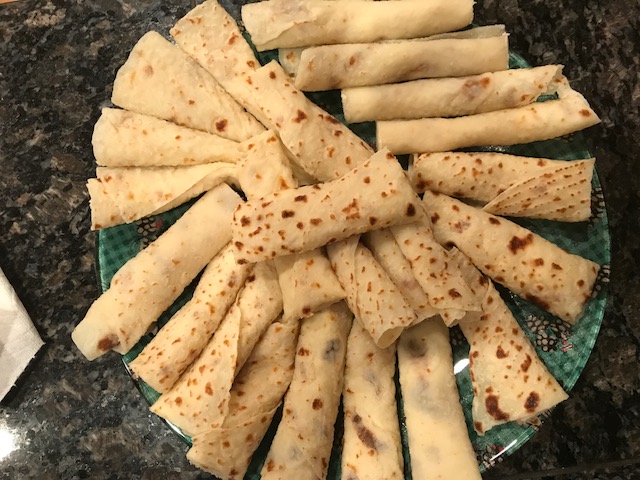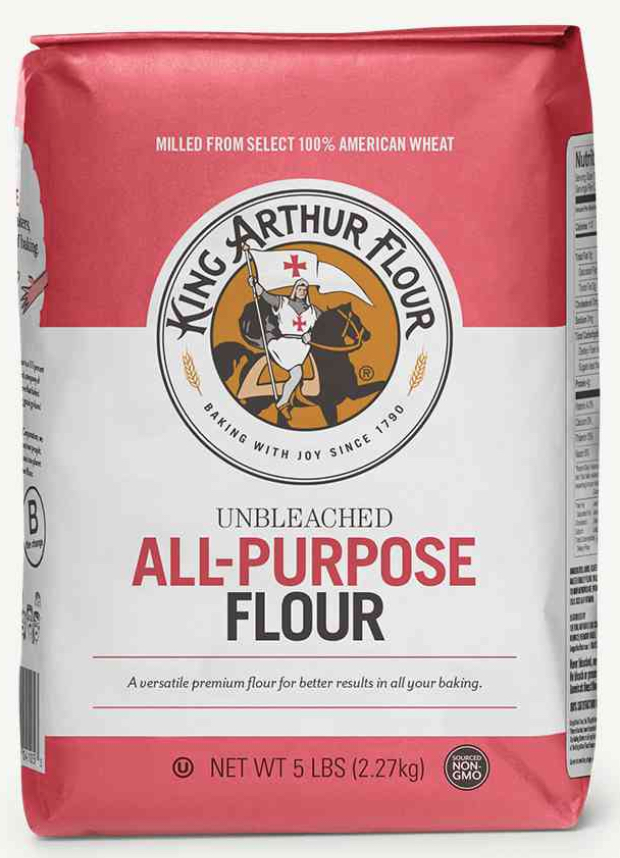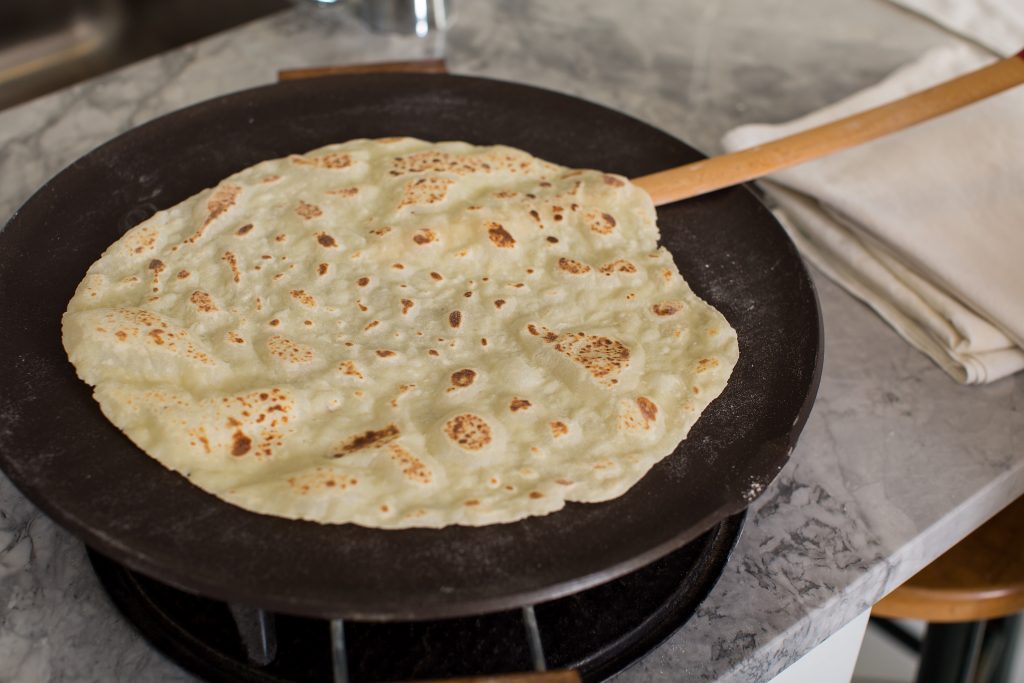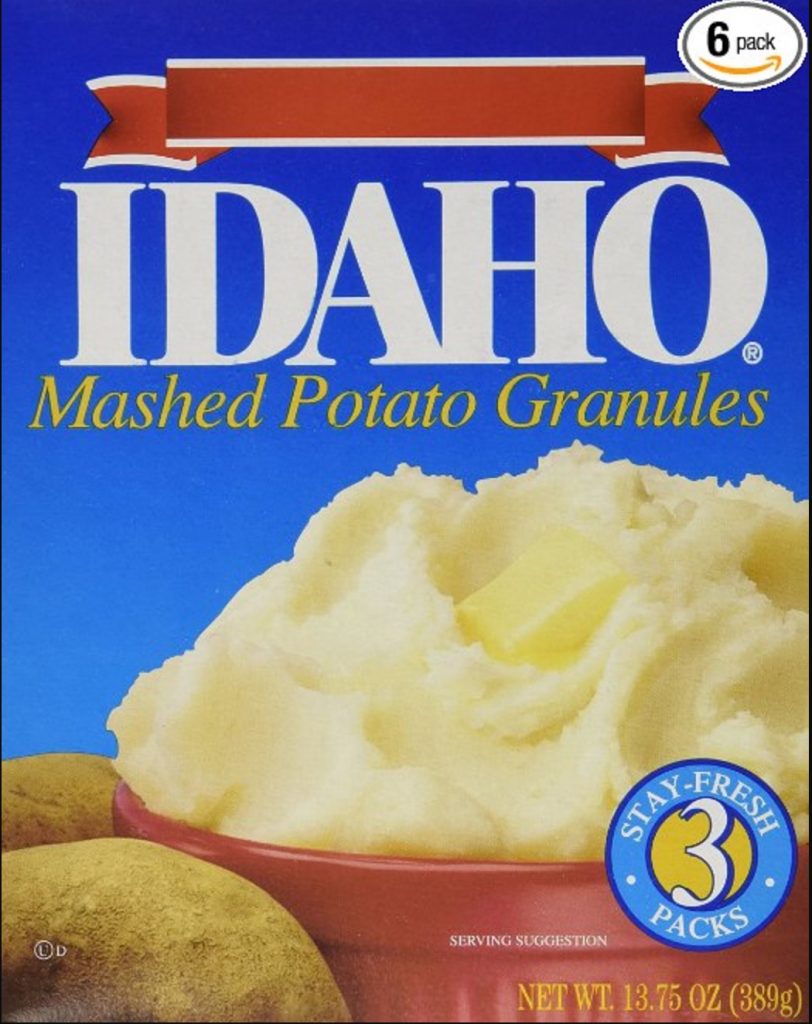Gary’s note: This is the second of three parts of Les Olsen’s fascinating blog about his family’s flatbrød and a very special type of lefse: krina lefse. Learn how to make it just in time for your Super Bowl gathering!
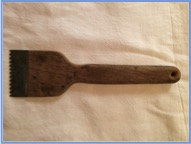
Krina lefse is named for the tool (see photo) used to put a pattern in the topping of the krina lefse. My father made this tool for his mother in the mid-1930s. Before then, I do not know what she used to make the pattern in the topping. Dad and I made several wooden krina tools almost two decades ago to give to the American nieces and nephews for Christmas. My wife’s 90-year old cousin had a wooden krina tool hanging on her wall in her kitchen. She knew what it was but had never used it. I purchased a manufactured krina tool in Norway in 1998 at the Husfliden (a store in Norway for handcrafts). It was made of brass with very deep ridges that left too much topping on the krina lefse and would not hold the pattern made by the tool in the topping.
Here is the easy recipe for making flatbrød, a thin cracker cooked on both sides, or the base for krina lefse, cooked on only one side with the topping put on the other side after cooling:
1/2 cup refrigerated butter—not softened
1 cup whole wheat flour
2 cups white flour
2 cups boiling water
In addition to the 2 cups white flour listed above, approximately 4 cups of white flour will be kneaded into the base after you add boiling water
Mix whole wheat and white flour in a large bowl. Cube butter and mix again.
Now the only hard part: Pour enough boiling water—about 2 cups—on the flour/butter mixture to moisten the flour and melt the butter. Mix with a spoon to moisten all of the flour/butter mix. Moisten so the base is “sticky” not soggy.
After the flour/butter mixture is moist, the butter is melted, and the base is cool enough to work with your hands, start kneading in approximately 4 cups of white flour, 1 cup at a time until the dough, when poked with your finger, returns to only a small dimple.
Ready to Roll
Roll the dough into a 3-inch-diameter log. Cut the log into 5/8-inch slices. Roll these slices into balls, about 2-inches in diameter, and place in a bowl. Cover with plastic wrap to keep from drying out, and put balls in the refrigerator. This amount of dough will make approximately 30 rounds.
Before rolling flatbrød or the base for krina lefse, hand flatten each ball on a pastry board sprinkled with about 3/4 of a tablespoon of flour on the center 4 inches of the board. Flour both sides of each flattened ball.
You are ready to roll either flatbrød or the base for krina lefse.
Flatbr⌀d
When rolling flatbrød, roll the flattened ball into a 14-inch diameter round, thin enough to nearly see through to the pastry cloth. Lift the rolled dough from the pastry board with a lefse stick, place it on 400+-degree griddle, and brown both sides. Put the baked flatbrød in a 170-degree oven for 2+ hours to make it very crisp. Then spread with butter and enjoy.
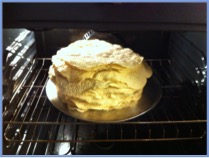
You can eat flatbrød with dinner, soup, or as a snack. My grandma made mountains of flatbrød at Christmas. During the Christmas season at our house, our daughter’s first stop is to check the oven where we store the flatbrød. And now her 4-year-old daughter is asking for flatbrød with butter.
Krina Lefse
When rolling krina lefse, roll the flattened ball until until the round is about 11 inches in diameter. My cousin taught me to use a 10-inch (or larger) stock pot lid to cut the lefse perfectly round after rolling and before placing on the griddle.
I should note that when rolling the krina lefse, my grandma and mom never cut the lefse with a stock pot lid. When they fixed krina lefse for serving to family and friends, they hand trimmed the rounds to make them round. The trimmings were what the kids got to fill up on; the good stuff was served to guests. Of course, the kids also were allowed a piece of the good stuff.
Bake the round on the 400+-degree griddle until tiny bubbles form on the lefse. DO NOT FLIP THE ROUND. Remove from the griddle and stack between two ¾ x 12 x 12-inch plywood boards wrapped in white flour-sack towels. This keeps the lefse from drying out too quickly and curling.
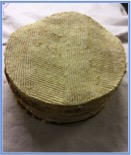
Next blog: Video showing how to make and apply the tasty topping for krina lefse.



